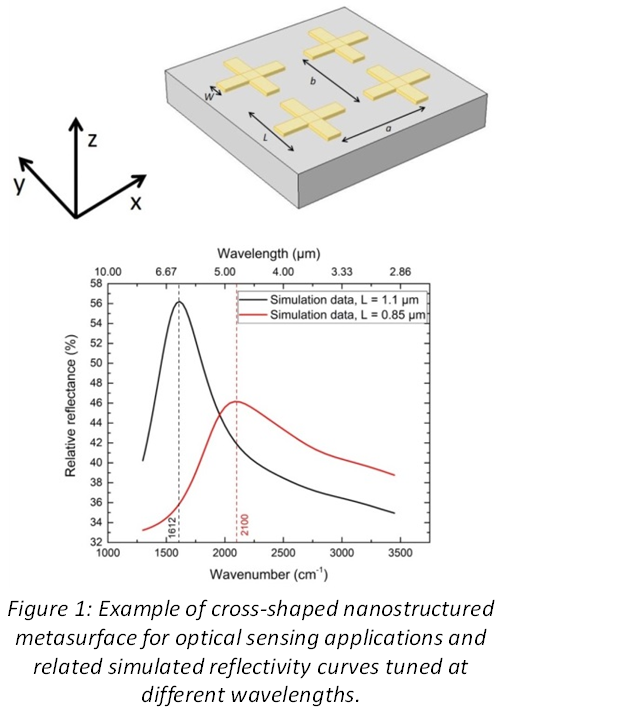Scope
The optoelectronics concerns electronic devices interacting with the light interfacing electrical and optical domains. In particular, the photodetection, operating an optical-to-electrical transduction, represent an important task in sensing systems and optical communications and can be performed by different optical sensing devices. In general, optical sensors are used in several detection techniques/methods resulting insensitive to electromagnetic interferences and able to perform non-destructive measurements.
In the last years, metamaterials/metasurfaces have also attracted interest due to their electromagnetic properties that can be properly designed for specific optical sensing applications. The classical optoelectronic detection approach largely employed to maximize the signal-to-noise ratio is based on the phase-sensitive synchronous demodulation implemented by lock-in amplifiers typically used for amplitude measurements. Nevertheless, an alternative approach, independent from signal amplitudes, is based on phase shift measurements between sensor and reference signals.
Besides, recent progresses in sensor microsystems have enabled combining high density signal conditioning/processing and data communication for a variety of biomedical applications. In particular, a key challenge in implantable devices is achieve high efficiency wide bandwidth biotelemetry links operating at low supply voltages. In this sense, optical biotelemetry systems, employing modulated/pulsed light sources and photodetectors, provide improved performances especially in terms of device size, bit rate, power consumption, electromagnetic compatibility and signal integrity.
In these regards, this TC is focused on the research/dissemination activities including, but not limiting, the following main topics:
- optoelectronic sensing of physical/chemical/biological phenomena
- nanostructured devices (metamaterials/metasurfaces) for optical sensing
- techniques, architectures, systems and instrumentations for optical detection (photodetector signal conditioning/processing, laser/LED drivers/modulators, etc.)
- optical communication systems for biotelemetry, optogenetic and Light-Fidelity (Li-Fi)
In particular, the TC purpose is to stimulate the interaction/collaboration of the community members sharing documents and knowledge, promoting national/international research projects, summer schools and training courses, technical events/workshops/seminars and facilitating the technology transfer towards industry and the industrial collaboration.
Figure 2: Example of architecture of a bidirectional optical communication system for biotelemetry and its on-chip implementation.
Chair
 Andrea De Marcellis received the degree in Electronic Engineering and the PhD in Microelectronics from University of L’Aquila in 2005 and 2009, respectively. Currently, he is Assistant Professor of Electronics at the Department of Industrial and Information Engineering and Economics, University of L’Aquila. He is co-inventor of a patent and co-author of a book, a book-chapter and more than 140 publications in international journals and as conference proceedings. His research career started in the area of analogue integrated circuits and systems for sensors interfacing and signal conditioning/processing. Presently, he is working also on optoelectronic sensors/sensing systems and optical communication systems.
Andrea De Marcellis received the degree in Electronic Engineering and the PhD in Microelectronics from University of L’Aquila in 2005 and 2009, respectively. Currently, he is Assistant Professor of Electronics at the Department of Industrial and Information Engineering and Economics, University of L’Aquila. He is co-inventor of a patent and co-author of a book, a book-chapter and more than 140 publications in international journals and as conference proceedings. His research career started in the area of analogue integrated circuits and systems for sensors interfacing and signal conditioning/processing. Presently, he is working also on optoelectronic sensors/sensing systems and optical communication systems.


